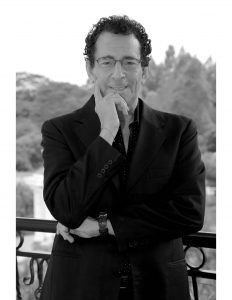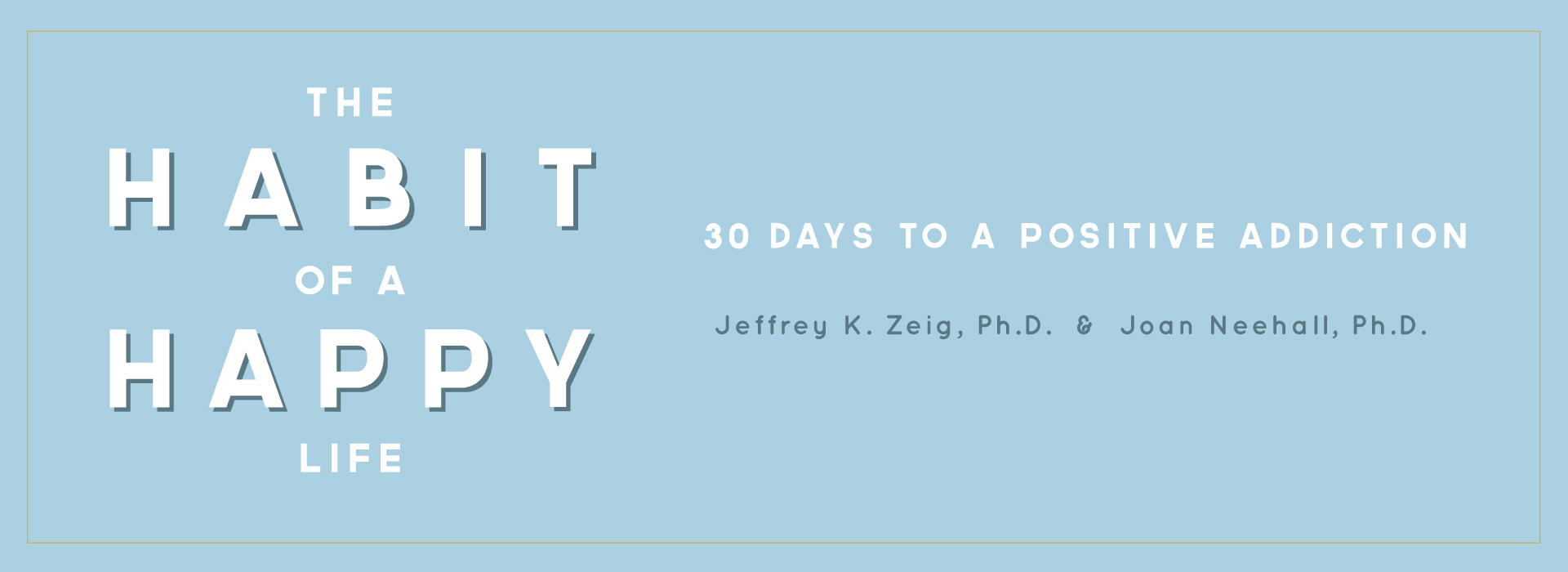
Jeffrey K. Zeig, Ph.D. is the Founder and Director of the Milton H. Erickson Foundation, He has edited, co-edited, authored or coauthored more than 20 books on psychotherapy that appear in twelve foreign languages. Dr. Zeig is the architect of The Evolution of Psychotherapy Conferences, the Brief Therapy Conferences, the Couples Conferences, and the International Congresses on Ericksonian Approaches to Hypnosis and Psychotherapy. A psychologist and marriage and family therapist in private practice in Phoenix, Arizona, Dr. Zeig conducts workshops internationally (more than 40 countries). He is president of Zeig, Tucker & Theisen, Inc., publishers in the behavioral sciences.

Joan Neehall Ph. D. is a forensic, clinical psychologist specializing in forensic assessments, psychological assessment, and individual and couples therapy. A graduate of University of Toronto specializing in Forensic Assessment, CBT, Brief Strategic Therapy, and Hypnotherapy, she has over 30 years of professional experience as a forensic and clinical psychologist, individual and couples counselor, and is the author of “Perfecting Your Private Practice: Suggestions and Strategies for Psychologists”. Neehall maintains a private practice in Edmonton, Alberta.
AN INTERVIEW WITH JEFF AND JOAN
Where did the idea for The Habit of a Happy Life come from?
Jeff: I knew and admired William Glasser, who wrote a popular book on “positive addiction” in the 1980s. I acquired the website, positiveaddiction.com, many years ago. When Joan wanted to collaborate with me on a project, this idea popped right up.
Joan: The thought occurred to me to co-author a book with Jeff. I had had a positive experience co-authoring Doc-Talk with a colleague, Dr. William Danton. I wanted to write a popular book for the layperson as my way of giving back. Jeff suggested 30 Days to a Positive Addiction and referred me to a paper he had written on the topic. This was the catalyst for the book.
What made you think you would be a good team?
Jeff: Joan had been one of my distinguished students, which segued into an enduring friendship. She is brilliant, enthusiastic, and diligent. I can’t think of a better partner for this project.
Joan: Jeff has depth and breadth of experience, in particular as an author. We did a Master series in Victoria in 2012. It was then that I got to appreciate his sensitivity and complexity on a personal level. We enjoy an excellent collegial relationship based on mutual respect and candor. Jeff’s keen sense of humor is dry and absolutely wonderful. I think that we complement each other because his way of approaching tasks and my way are very different. He also has a strong moral compass, which I respect, as well as a profound sense of humility, which I appreciate.
You say that we need just 30 days to establish a routine that begins to be automatic rather than requiring constant exertion. Is there scientific evidence for this idea?
Jeff: A reasonable amount of time to establish a new habit is 30 days. In his book Psycho-Cybernetics, Maxwell Maltz indicated that it took a minimum of 21 days for an old mental image to dissolve and a new one to jell. This is likely where some extrapolation took place as people began to think of 21 days as being the benchmark.
And some research has suggested that there are habits that can be changed in as little as 20 days though others take as many as 66 days to change. In our book, we are focusing on the establishment of a positive addiction — a healthy habit cannot become automatic until it is established!
Joan: Research has shown that it takes 30 days to establish a habit and about 30 days to make it automatic, like brushing your teeth, for example. In a study (2009) following 96 individuals, Phillippa Lally, from the UK Health Behavioural Research Centre, found that it takes on average 66 days for automaticity to occur. To create a habit, you need to repeat the behavior in the same situation. The setting cues the behavior. Consider a context cue, for instance, after work, after lunch, after dinner. It doesn’t matter what time you finish, the associated behavior will follow.
Are you just talking about exercise in the book?
Jeff: Most of our habits are constructive. A common example is brushing one’s teeth. But, some habits are maladaptive. Negative addictions are the shackles of the free. And, we can liberate ourselves from negative habits and establish adaptive patterns.
Exercise is a habit that most people say they would like to have. For some, myself included, exercise is a daily habit. But this book is not about exercise; it helps readers target constructive habits that would better their lives. Then, it provides a practical stepwise method for bringing those habits to life. The Habit of a Healthy Life may include exercise but should not be limited to any one possibility.
Joan: Exercise is but one example of a positive addiction. A positive addiction can be clean eating, hiking, contemplation, collecting items of interest, working in a soup kitchen, writing, drinking more water, photography, birdwatching, hand-gliding, reading, learning a new language, playing the guitar, planting a garden, and on and on.
What happens if on Day 29 I have an emergency that takes me away from my new habit?
Jeff: There are many ways that one can make a fool of oneself. One way is trying too hard to succeed at success. Another way is targeting perfection as an uncompromising standard. Numerous things may cause one to stumble. But the principles in the book provide instructions about getting back on the path.
Joan: It doesn’t matter whether it is day 29 or day 2, you simply get back in the saddle and keep going. We suggest that people do it in the same context. Consistency is very helpful. Consistency and context. For example, I go to the gym immediately after work to shut down work. So, the cardio is done at that point to release stress. It is contextual for me. I know when work is finished I’m going to do it, so it doesn’t really matter if I finish work at 10 p.m. or 2 p.m.
Do you have clients for whom this approach has worked?
Jeff: I have been a clinical psychologist for 40 years, but started working in the mental health field in the late 1960s. I can’t count the number of people whom I have helped to establish positive addictions and for whom such habits have improved life immeasurably.
Joan: The first person who comes to mind is a 53-year-old client with a food addiction. She would eat after dinner when bored or distressed. Also, at the bank where she works, there’s always an array of donuts, pastries, and other treats. Recently, she has amended her behavior to cut out trips to the coffee pot, which keeps her from temptation. She replaced coffee with water. In addition, she has started knitting for her grandson, a habit with a joyful incentive, and taking walks with her husband after dinner rather than just sitting around. She also found that two of her friends were interested in walking with her during lunch breaks.
What are some of your positive addictions?
Jeff: One of my positive addictions is playing bridge. I earned the rank of Bronze Life Master, which sounds more distinguished than it is. I study bridge every day, reading and watching experts play online when I can spare five or 10 minutes. My work as a psychologist is stressful because I help people with difficult problems. Between sessions, I might distract myself by reading a bridge column like the way that a smoker might punctuate a task with a cigarette. I’m just an average tournament player. I pursue excellence in my professional work. I want to be the best bridge player that I can be, but I know that I will not be excellent. I want to be the architect of my hobby, not have the hobby design my life.
It is similar to taking Spanish. I take lessons regularly. I don’t pursue excellence. I am not great at languages, but learning Spanish is a hobby I enjoy. I gifted my staff with individual Spanish lessons and it has become a hobby for several.
I exercise every morning, 350 days a year. I would exercise 365 days a year but I travel internationally to teach and some days it’s not possible. I don’t think about exercise. It’s something I do. I also have an addiction to education, and while I’m exercising I often listen to educational videos. These two addictions are complementary.
Another addiction is flying gliders, which I’ve done for 35 years. I fly about once a month, and still take lessons so that I can be a safer pilot.
Joan: Some of my positive addictions are running, hiking, weight training, reading, traveling, learning a new language (I am currently learning Italian), writing, and contemplation. I’ve started to learn gliding as well — thanks to Jeff!
What is the most unusual positive addiction you have seen someone develop?
Jeff: I had a patient who spent most of his waking hours correcting books on the American railroad while he listened to classical music. He had a most extensive library of railroad books. He cross-referenced them carefully, making notations about errors in the margins of the books. He didn’t want to do anything with the annotated books. He read them solely for his pleasure. His son, whom I knew, was highly critical of his father, wanting him to have more depth and scope in his life. But, my patient was immune to his son’s direction. He was content with his railroad hobby and found subjective meaning in continuing it.
Joan: There is a 78-year-old woman in Phoenix. Forty years ago she started collecting dolls, beanie babies and stuffed toys, when her husband, an aeronautical engineer, would travel for work. She would be left alone with their three young children. She was a teacher but elected to stay at home and raise her young family. Her way of coping was to collect these playful items. She has continued this addiction today. It is her treasure hunt. Two years ago, her husband bought a larger home (5,000 square feet) to house these artifacts at her request. Her husband is very good-natured about it. He is supportive and considers himself the docent or the curator of her “museum.” Some of these dolls are worth quite a bit and others are worth very little. A positive addiction is an idiosyncratic thing. One person’s positive addiction is another person’s peculiarity!
Can someone overdo a positive addiction?
Jeff: It’s true that someone can overdo a positive addiction. It is possible to be compulsive about a positive addiction. One can spend too much time exercising. One can spend too much time playing bridge. Compulsive patterns are those that interfere with the experiences that are adaptive in life.
Joan: Because any positive addiction is likely to enhance your life, my reflex is to say, “No.” If you overdo it, you are, on some level, saying to me is that your life is being enhanced by what you have engaged in, and thus you want to do more of it. Usually, people who develop positive addictions have not just established balance in life, they have a clear sense of priorities and a feeling of being in control versus just watching themselves going through the motions. Having said that, there are, of course, emotional/psychological/physiological vulnerabilities that can lead to issues, even with ostensibly positive addictions. One can over-exercise, or invest more than one actually has into collecting art, restoring antiques, or piano lessons. The question we always have to ask ourselves is whether what we are doing leads to greater (or less) balance and life satisfaction.
Is it okay to develop multiple positive addictions?
Jeff: Not only is it okay to develop multiple positive addictions, it is desirable to do so. Moreover, it may be possible to “double up.” I double up on my positive addiction to exercise and learning. The complementarity can shore up different parts of us and keep us going when we feel a little lazy of off-kilter.
Joan: It is great to develop multiple addictions. For example, meditation and dance, hiking and travel, and so on. In addition, there is an important social aspect of positive addictions. Having the social support network (even a network of you and another) can help bolster the establishment of a positive addiction and its maintenance.
A negative addiction often eventually envelopes an entire life, can a positive one positively affect the whole of life?
Jeff: Developing a positive addiction is a “reference experience.” Reference experiences create cohesion in our life journey. Positive reference experiences create positive identities. A child reinforced for doing something creative in school may develop into the identity of being a creative person. And, there’s a transfer of training. Once a person learns to ride a bicycle, it’s easier to drive a motorcycle. A new positive addiction can have a snowball effect. It can be instrumental in creating a constructive identity. It can, moreover, serve as an inspiration for those in your social system to improve their identities. Rather than complaining about how others aren’t doing something, your commitment — and the benefits that will be experienced and witnessed — will provide evidence-based incentive!
Joan: Yes, definitely a positive addiction will add balance and affect every area of your life, for example, through clean eating, exercise, reading, developing friendships, etc. Our point, and the process we outline — including activities, examples, and a day-by-day calendar — is to get to automaticity so that the positive addiction that at first takes some effort to hold onto soon begins to feel as though it holds you.
